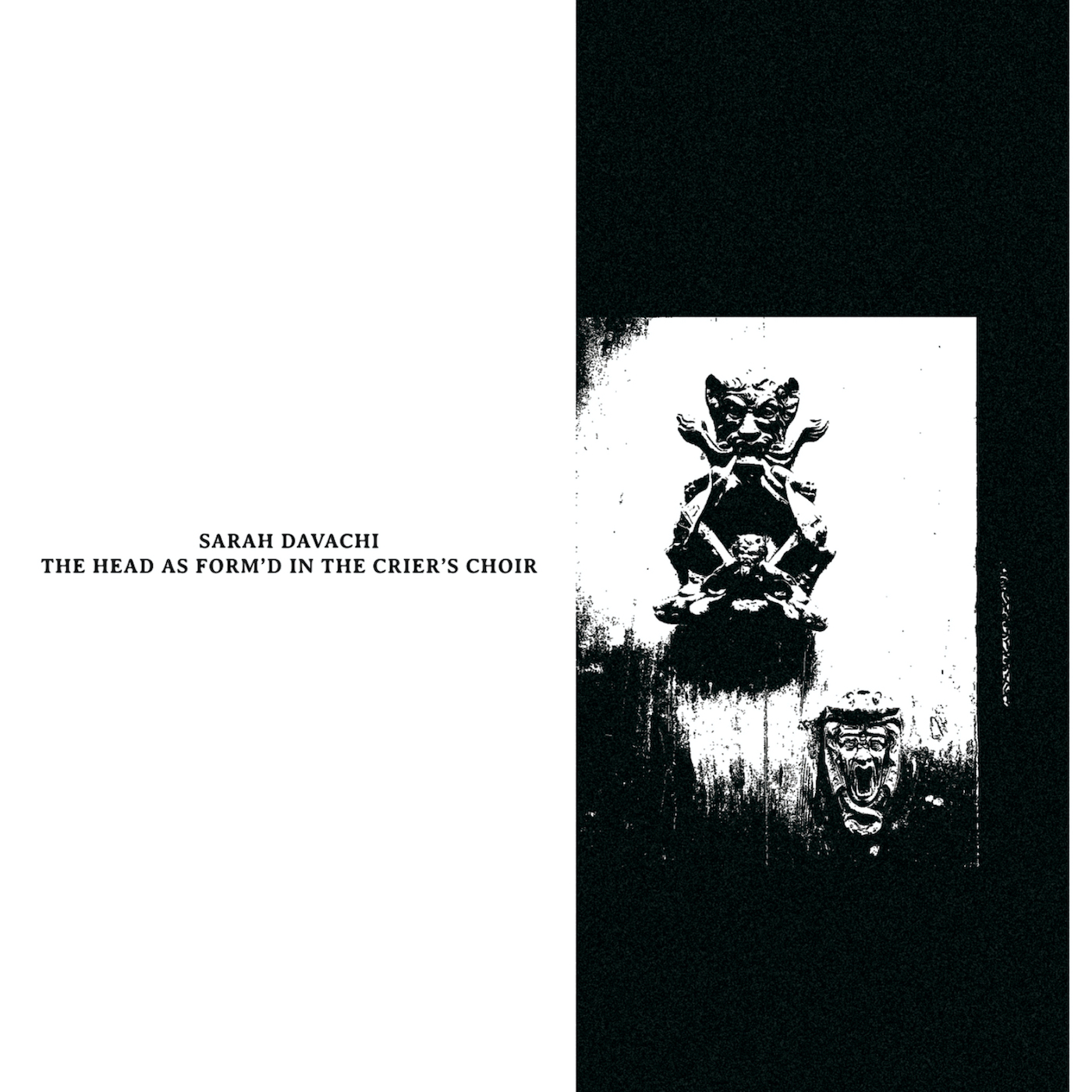
The Head as Form'd in the Crier's Choir
—
Out September 13, 2024
—
Late Music



“Silent friend of those far from us, feeling how your breath is still enlarging space, fill the sombre belfry with your pealing.”
The seven compositions on this album, written between 2022 and 2024, form a conceptual suite and an observance of the mental dances that we construct to understand acts of passage; the ways that we commune and memorialize and carry symbols back into the world beyond representation. To this end, The Head as Form’d in the Crier’s Choir engages two references to the ancient Greek myth of Orpheus: Rilke’s Sonnets to Orpheus, a collection of poems from 1922, and Monteverdi’s l’Orfeo, an early baroque opera from 1607. The Head as Form’d in the Crier’s Choir is a supplement of sorts to Two Sisters (2022) and Antiphonals (2021), which were attempts to begin bridging the gap between the fixed electroacoustic pieces that emerge in Davachi’s home studio and her slow-paced, somewhat open-form chamber writing, in which each performance presents a new structure and in which each iteration offers the path to a new composition and deeper meaning. Alongside Davachi, featured musicians on this album are Andrew McIntosh (viola, Los Angeles), Mattie Barbier (trombone, Los Angeles), Lisa McGee (mezzo-soprano, Los Angeles), Pierre-Yves Martel (viola da gamba, Montréal), Eyvind Kang (viola d’amore, Los Angeles), and Rebecca Lane (bass flute, Berlin), Sam Dunscombe (bass clarinet, Berlin), Michiko Ogawa (bass clarinet, Berlin), M.O. Abbott (trombone, Berlin), and Weston Olencki (trombone, Berlin) of the Harmonic Space Orchestra (Winds).
For Davachi’s part, she again returns to her favourite keyboard instruments: Mellotron (in particular, the brass and woodwind samples), electric organ (the Korg CX-3), synthesizer (the Prophet 5 and Korg PS-3100, which are both extremely useful in their tuning capabilities), and, of course, pipe organ. There are four pipe organs featured on this album: a mechanical-action instrument built by Tamburini in 1968, located in the Basilica di Santa Maria dei Servi of Bologna, Italy; an electric-action instrument built by Veikko Virtanen in 1969, located in the Temppeliaukio Church of Helsinki, Finland; a meantone mechanical-action instrument built by John Brombaugh in 1981, located at Oberlin College’s Fairchild Chapel in Oberlin, OH, USA; and, a mechanical-action instrument built by Aristide Cavaillé-Coll in 1864, located in the Église du Gesù of Toulouse, France.
The organ pieces on The Head as Form’d in the Crier’s Choir focus more heavily on the instruments’ pedals as well as the textural variations made possible by the mechanical tracker actions that most possess. ‘Possente Spirto’ is a loose conceptual reference to the aria ‘Possente spirto, e formidabil nume’ in l’Orfeo. As in Monteverdi’s version, ‘Possente Spirto’ also emphasizes the use of strings and brass and observes a particular order in which they enter and exit, and also incorporates a sort of continuo framework. It departs from there to focus on a slow-moving chord progression and its variations in voicing, inspired by renaissance concepts of harmony as a vertical structure, set within a standard quarter-comma meantone temperament. The piece employs the same structure that Davachi uses in most of her chamber writing, where each iteration of a performance is slightly different, calling on players to respond in real time and engage in a more direct form of listening. ‘Trio for a Ground’ continues this feeling of partitioned instrumentation, with the organ providing the continuo throughout and the choir handing off to a duo of strings. In this recording, Davachi works with baroque strings – the viola da gamba and the viola d’amore, the latter of which incorporates a set of sympathetic strings that exist entirely for resonance. ‘Res Sub Rosa’ was composed specifically for a wind quintet formation of Berlin’s Harmonic Space Orchestra, and employs a system of septimal just intonation as well as a similarly variable structure that allows the players some discretion in how the piece is shaped at any given moment and which encourages different harmonic and acoustic encounters in each performance. ‘Constants’ functions as an electronic counterpoint to ‘Res Sub Rosa’, substituting human decisions with the natural interruption and decay cycles of sound-on-sound tape delay to achieve a similar sense of pacing and unpredictability.
ABOUT SARAH DAVACHI
As a composer and performer of electroacoustic music, Sarah Davachi’s work is concerned with the close intricacies of timbral and temporal space, utilising extended durations and considered harmonic structures that emphasise gradual variations in texture, overtone complexity, psychoacoustic phenomena, and tuning and intonation. Her compositions span solo, chamber ensemble, and acousmatic formats, incorporating a wide range of acoustic and electronic instruments. Similarly informed by minimalist and longform tenets, early music concepts of form, affect, and intervallic harmony, and experimental production practices of the studio environment, in her sound is an intimate and patient experience. Davachi has toured extensively across the globe and has shared the stage with artists such as Ellen Arkbro, Oren Ambarchi, Grouper, William Basinski, Aaron Dilloway, Robert Aiki Aubrey Lowe, Loren Connors, Tashi Wada, Charlemagne Palestine, and filmmaker Dicky Bahto. Between 2007 and 2017, Davachi also had the unique opportunity to work for the National Music Centre in Canada as an interpreter and content developer of their collection of acoustic and electronic keyboard instruments. She has held artist residencies at the Banff Centre for the Arts, STEIM, WORM, Elektronmusikstudion, OBORO Montréal, the Melbourne Electronic Sound Studio, the National Music Centre, and the Swiss Museum & Center for Electronic Music Instruments. Davachi is currently a doctoral candidate in musicology at UCLA, focusing on timbre, phenomenology, and critical organology, and is based in Los Angeles, California.